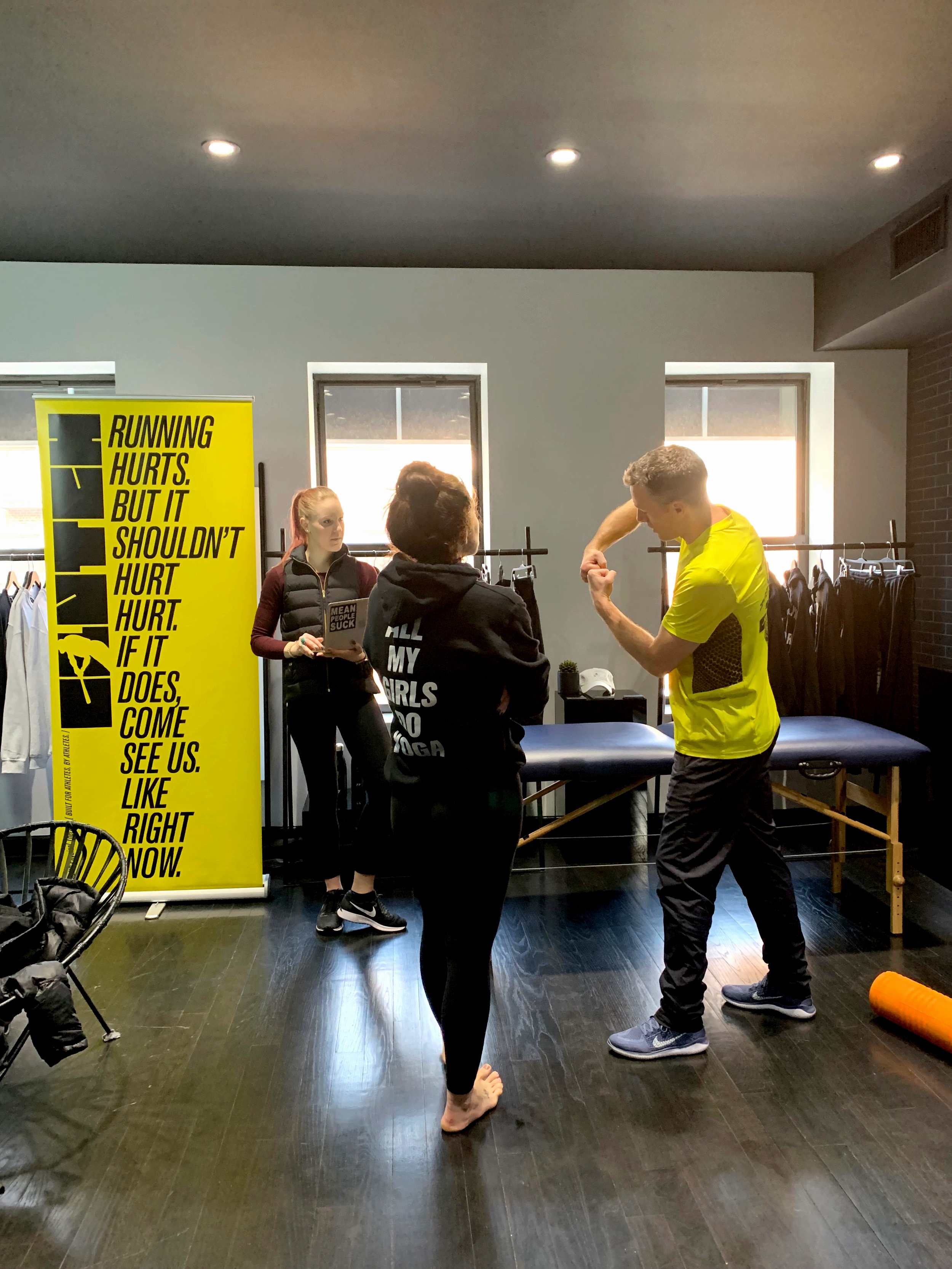Focusing on some ski-specific moves to improve your proprioception will help get your body ready for the demands of time on the mountain. Dr. Josh demonstrates three key exercises to help ensure your last run is as smooth as your first. Watch his simple stretching routine to hit ankles, calves, hip flexors and quads, too.
When we force our TFL to work overtime, it cops an attitude. We wind up with misleading pain in the hip, low back, knee or piriformis. But the real drama queen is the TFL, the primary culprit in the dreaded IT Band Syndrome (ITBS). Here’s how to address it head on.
With a background in training high level collegiate and pro athletes, Dr. James set out to prove that even newbie marathoners can strength train just like elite team sport athletes. He believed they could not only succeed, but become faster, stronger and more efficient. Here’s what happened!
Marathoners often find themselves asking “Should I run through this pain?” The answer comes down to the type of pain you’re experiencing. Use this handy scale of Pain Levels 1-5 to figure out if you’re safe to keep on keeping on, or if you should get checked out by a physical therapist.
Not all injuries can be prevented, but all athletes can reduce injury risk by working with a sports rehab specialist. It’s within every athlete’s control to work past injury rehabilitation toward injury prevention and ultimately achieve optimized performance.
Tips from Dr. James Sinodinos, our sports performance specialist at Clutch PT, to help your kids get the most out of their summer travel baseball season.
Why do so many of us merely consume healthcare, complacent with what an insurance company dictates we need? In every other aspect of our lives, we are we discerning customers. We should expect and seek expertise that will accelerate recovery and prevent injury in the first place. We only get one body, and it has to hold up to help us accomplish everything we dream of doing. Shouldn’t that be worth more than what you’re chalking it up to now?
We often have athletes come through our doors looking to achieve perfect alignment in their form, convinced that their asymmetries are what’s holding them back. While it’s true that asymmetries can lead to injury and chronic tightness, or be the culprit behind race day disappointment, the bottom line is, “perfect alignment” does not exist. The human body is naturally asymmetrical. The challenge is to work WITH an asymmetry, not against it.
Running the NYC Marathon? Here’s how to nail your final prep and race day.
The training’s in the bank and it’s time to taper for your marathon. But when a runner backs off their mileage and tells their body to rest, sometimes, it revolts. Here’s how to tell if that new pain during taper is real or just in your head, and what to do about it.
We’ve been lead to believe that the more kegels we do, the better our sex life will be, and we won’t pee ourselves when we laugh or run after having kids. Turns out, it’s not quite that simple. We go over some common misconceptions about kegels and the benefits of pelvic floor physical therapy.
No one wants to be in pain. So, when any kind of ache, tweak, mysterious twinge or more serious strain or injury occurs, your first instinct is to see a doctor. But heading to your primary care doctor or trying to get in to see an orthopedic specialist is not the best solution. Here’s why you should see a physical therapist first.













